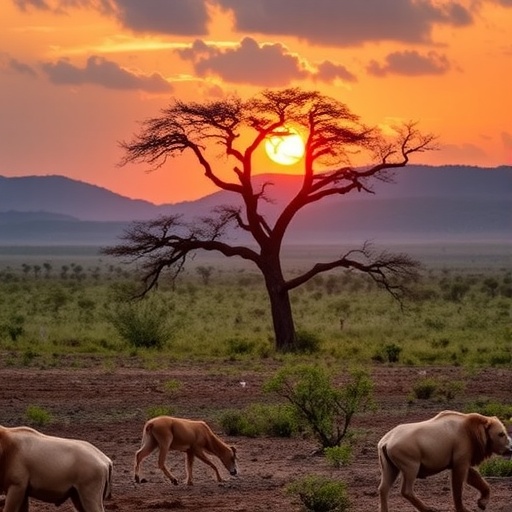Energy Other

Energy Flows Expose Africa’s Declining Animal Ecosystem

A New Energetic Lens on Ecosystem Health in Africa
A landmark study published in Nature has utilized energy flow metrics to reveal significant declines in animal-driven ecosystem functions across Africa. By quantifying the energetic consumption within animal communities, the research provides a novel and complex assessment of biodiversity integrity, illustrating how species loss and land-use changes disrupt ecological networks. This energetics framework offers a powerful tool for guiding conservation and restoration strategies in the face of accelerating environmental change.
Energy Flow as a Functional Proxy
The study positions energy flow as a vital indicator of ecosystem function, moving beyond traditional metrics like species counts. This approach captures the dynamic processes through which animals interact with their environment, influencing nutrient cycling and overall ecosystem stability. However, the authors caution that this metric has limitations, as it may not fully capture the ecological value of rare or endemic species whose contributions are not proportional to their energy consumption or biomass.
The Critical Link Between Energy and Stability
A key finding of the research challenges the assumption that high energy flow automatically signifies a healthy ecosystem. The study demonstrates that when energy throughput is dominated by a single species, the system becomes more vulnerable to collapse. This underscores the importance of species diversity within functional roles, revealing that a multiplicity of contributors is essential for buffering ecological functions against environmental fluctuations and anthropogenic pressures.
Nuanced Impacts of Human Disturbance
The research presents a nuanced perspective on human impacts, challenging the conventional view that land-use change is uniformly detrimental. The authors show that certain disturbances—such as rangeland management, cropland cultivation, and selective logging—can locally amplify animal energy consumption. For instance, logging can increase vegetation palatability, thereby boosting herbivore energetic intake. This highlights that ecosystem responses are context-dependent and warns against one-size-fits-all conservation paradigms.
Methodological Considerations and Scale
The continental-scale analysis combines diverse datasets on species populations, traits, and allometric scaling laws. The authors acknowledge that this integration introduces uncertainties, particularly at local scales or for individual species, due to the assumptions and simplifications inherent in each dataset. They suggest that guild-level analyses offer more robust insights. While the study provides an unprecedented macroecological assessment, the authors call for finer-scale empirical studies to validate and refine the energetics approach.
Practical Applications for Conservation and Restoration
The energetics framework offers practical utility for conservation practitioners. When evaluating restoration projects, the study advises assessing not only the recovery of energy throughput but also the diversity of species contributing to key functions. Efforts that simply boost energy flow risk creating unstable ecosystems if dominated by a few species. This integrated view of energy dynamics and species diversity provides a more holistic measure of functional recovery.
The study also reinforces that some anthropogenic disturbances can sustain or enhance certain ecological functions, especially in ecosystems like savannas that are adapted to disturbance. This challenges ecologists to develop management strategies that balance conservation goals with human land-use realities, using energetics as a quantitative tool to distinguish between sustainable and detrimental disturbances.
A Call to Action and a Path Forward
The findings serve as an urgent call to action, framing the biodiversity crisis in terms of the cascading loss of ecosystem functions that support both wildlife and human societies. By highlighting declines in energetic vitality, the research elevates the urgency of conservation beyond mere species lists.
The study concludes that integrating energy flow metrics with traditional biodiversity indicators enriches ecological diagnostics and enables a more nuanced evaluation of ecosystem health. Despite data and modeling challenges, this pioneering work demonstrates the feasibility and value of continental-scale energetics. The perspective is presented as an indispensable lens for diagnosing, managing, and preserving ecosystems in a rapidly changing world.












